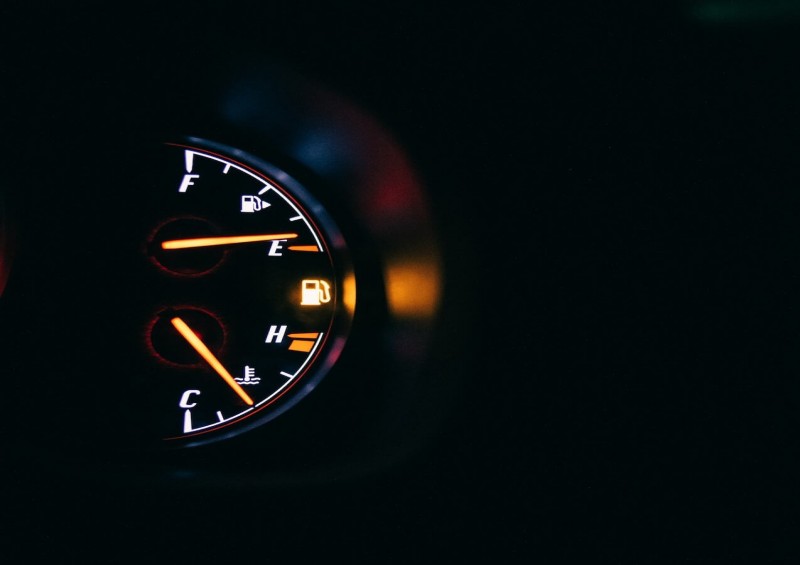Costly consequences of delaying fueling your vehicle

A recent study has shed light on a concerning trend among motorists, with over half of them putting themselves at risk of expensive repairs by waiting too long to fill up their vehicles.
Motorpoint, a leading automotive retailer, conducted research that uncovered some startling statistics. The study found that 42% of drivers wait until their fuel light illuminates before refuelling, while an additional 16% admitted to pushing their fuel to the limit, attempting to squeeze every last mile out of their tanks. Unfortunately, this risky behaviour puts their engines in jeopardy.
Many car experts and mechanics always emphasise the importance of not waiting for the fuel light to come on before heading to the petrol station. There's no need to wait for the fuel light to illuminate to refuel your vehicle — it's a habit that drivers should break. Regardless of whether you drive a petrol or diesel vehicle, consistently running your car close to empty can lead to various issues that can be quite costly to repair. Remember, the fuel warning light serves as a clear indication that you need to refuel your car. There's nothing to gain from attempting to maximise your remaining mileage.
Understanding the fuel light and its implications
The purpose of the fuel light is to alert drivers that their fuel level is reaching a critical low and to help them avoid unnecessary breakdowns.
In general, the fuel warning light will only activate when the fuel tank capacity drops below 10-15%. The distance you can travel after this point depends on your vehicle's fuel economy and your driving style.
It is worth noting that you should try not to rely on a set distance and take a cautious approach instead. It's always better to err on the side of caution and refuel as soon as possible. The longer you wait, the higher the risk of unknowingly causing damage to your engine, which will inevitably lead to more substantial expenses in the long run.
The legal aspect of low fuel driving
While it is not illegal to drive with the fuel light on, drivers should be aware that if their vehicle breaks down due to lack of fuel, resulting in an obstruction or accident, they may face legal consequences.
According to the Highway Code, running out of fuel while driving and causing an obstruction or accident can be considered "careless and inconsiderate driving." This offence carries an unlimited fine and between three and nine penalty points.
Motorpoint estimates that, based on current driving habits, approximately 5.3 million drivers will be at risk of running out of fuel in 2023.
Running out of fuel can be dangerous, and as a motorist, it is your responsibility to drive in a manner that minimises risks. Breaking down and waiting on the side of the road due to fuel depletion is entirely avoidable and can lead to accidents, especially on busy roads or motorways.
The consequences of driving with low fuel
Beyond the inconvenience of breaking down and requiring assistance, Tim Rodie warned that driving with low fuel can cause damage to various engine components.
Consistently driving with low fuel can impact the overall health of your fuel system, particularly the fuel pump and filter, both vital for maintaining smooth vehicle operation.
If you make a habit of driving with low fuel, a couple of concerns related to your fuel pump should be on your radar. Firstly, air can be drawn into the fuel system, leading to vehicle stalling or difficulty starting. Additionally, the fuel pump is not designed to function without fuel passing through it, making overheating a real possibility.
As your fuel level decreases, any debris accumulated at the bottom of your tank may get picked up and circulated throughout your fuel system. Over time, this debris can clog your fuel filter, restricting the amount of fuel reaching your engine and potentially resulting in engine failure.
Optimal refuelling practices
Instead of waiting for the fuel light to illuminate, Tim Rodie recommended refuelling when your tank drops below a quarter of its capacity.
While it might seem counterintuitive to head to the petrol station when you still have fuel remaining, it is, in fact, the best practice for your vehicle. Moreover, it may save you unnecessary detours, as you can plan your refuelling stops conveniently along your route.
No one likes to drive while anxiously wondering if they have enough mileage to reach the nearest petrol station. Keeping a reasonable amount of fuel in your tank is the safest approach. Not only does it prevent running out of fuel and the associated issues, but it could also spare you from a hefty repair bill in the future.
Left it too late and run out of fuel?
In the unfortunate event that you find yourself stranded on the side of the road due to running out of fuel, remember to stay calm and prioritize your safety. To receive prompt assistance and get back on track quickly, we recommend reaching out to Assist-U. Their dedicated team is ready to help you 24/7. Simply call them at 0330 165 9544, and they will provide the support you need in this challenging situation. Stay safe and let the professionals take care of your fuel-related mishaps.
